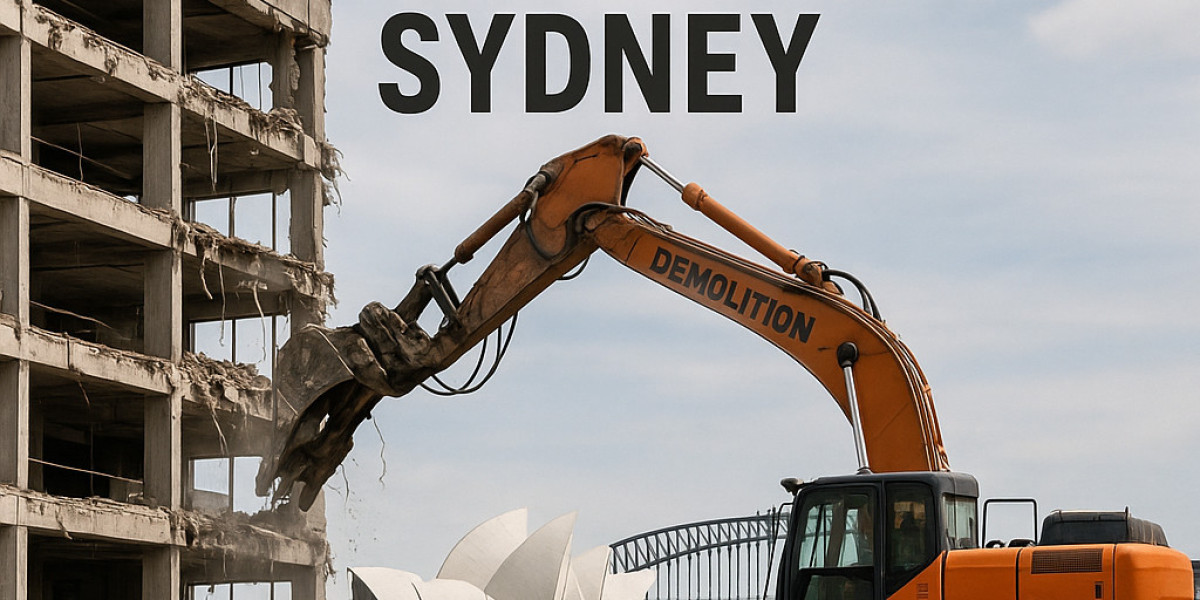Commercial demolition in Sydney plays a vital role in urban development, infrastructure upgrades, and real estate revitalization. Whether it's to make room for a new office tower, retail center, or mixed-use development, commercial demolition is the critical first step in transforming outdated or unsafe structures into new, modern spaces. This guide explores everything you need to know about commercial demolition Sydney—from the types of services available to legal requirements, processes, costs, and selecting the right contractor.
What Is Commercial Demolition?
Commercial demolition involves the dismantling or destruction of buildings used for business or industrial purposes. This includes:
Office buildings
Shopping centers
Factories and warehouses
Hospitals and schools
Hotels and motels
Multi-storey complexes
Demolition can be full (entire structure removal) or partial (selective demolition of certain areas or components), depending on the client's requirements and development plans.
Types of Commercial Demolition in Sydney
Full Demolition
Complete removal of a structure, including foundations.
Ideal for properties being rebuilt from scratch.
Partial Demolition
Only certain sections of a building are demolished.
Common in renovations and extensions.
Interior Strip-Outs
Removal of non-structural elements like fixtures, fittings, and partitions.
Prepares spaces for redesign or repurposing.
Deconstruction
A more sustainable approach that involves careful disassembly to salvage reusable materials.
Mechanical Demolition
Use of heavy machinery like excavators, bulldozers, and cranes.
Implosion or Controlled Explosives
Rare but used for large, tall structures where space and time are limited.
Steps in the Commercial Demolition Process
Site Inspection & Assessment
Engineers assess structural integrity, hazardous materials (like asbestos), and access points.
Demolition Permits & Approvals
Approvals must be obtained from local councils in Sydney, and may involve environmental assessments, noise management plans, and safety clearances.
Asbestos & Hazardous Material Removal
Licensed contractors remove hazardous substances following strict WorkSafe NSW and EPA guidelines.
Utility Disconnections
Power, water, gas, and telecom lines must be safely disconnected before work begins.
Demolition Execution
The structure is methodically taken down, with machinery and safety protocols in place.
Waste Management & Site Clean-Up
Materials are sorted for recycling, reuse, or proper disposal. The site is leveled and prepared for the next construction phase.
Regulations and Legal Requirements in Sydney
Sydney's demolition projects must comply with several state and local regulations:
Work Health and Safety Act 2011 (NSW)
NSW Environment Protection Authority (EPA) standards
Local Council Development Control Plans
Asbestos Removal Code of Practice
Failure to comply can result in heavy fines, legal action, or work stoppages.
Benefits of Professional Commercial Demolition
Safety Assurance: Professional teams minimize risk to workers and the public.
Time Efficiency: Licensed contractors work within strict timelines, avoiding unnecessary delays.
Regulatory Compliance: Experts manage all permits and legal obligations.
Cost-Effective Waste Disposal: Proper recycling and material salvage reduce overall project costs.
Environmental Responsibility: Sustainable practices and dust/noise management help protect nearby communities.











